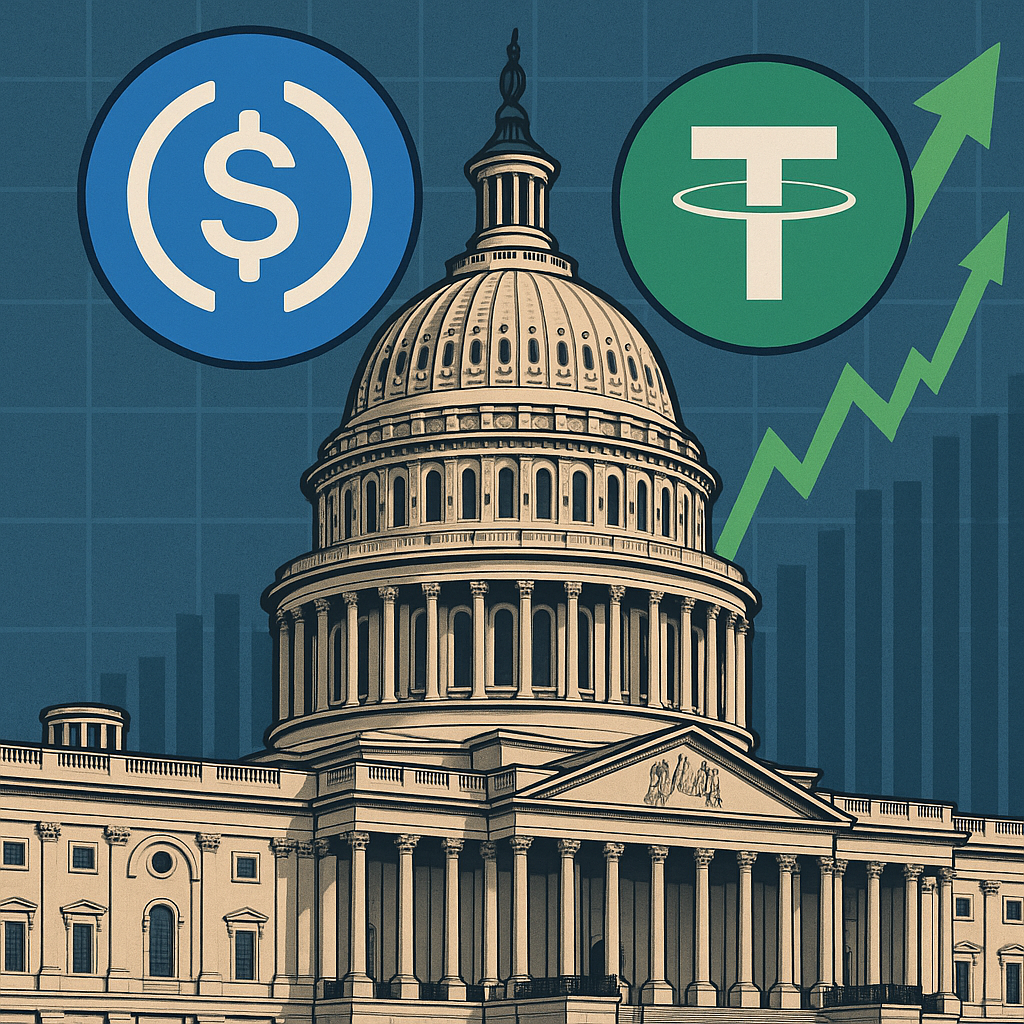GENIUS Act Becomes Law: Stablecoin Clarity Sparks New Crypto Momentum

GENIUS Act Becomes Law: Stablecoin Clarity Sparks New Crypto Momentum
The United States has officially enacted the GENIUS Act, marking the country’s first comprehensive legal framework focused exclusively on stablecoins. This bipartisan legislation establishes clear industry standards and is expected to catalyze institutional participation and long-term adoption of digital assets.
Key Provisions Set the Stage for Stability
Under the new law, stablecoin issuers must:
- Fully back each token with high-quality liquid assets, such as U.S. dollars or Treasury bills
- Maintain segregated reserve accounts and undergo monthly public attestations
- Register as Permitted Payment Stablecoin Issuers (PPSIs) and comply with anti-money-laundering regulations
The framework explicitly prohibits algorithmic and fractional-reserve stablecoins unless they meet strict collateral requirements. It also issues operational and compliance thresholds for banks, fintechs, and payments firms.
Market Reaction: Institutions Pivot In
Crypto-friendly public firms, fintech operators, and custodians welcomed the GENIUS Act as proof of the U.S. commitment to regulatory clarity. As a result:
- Traditional finance companies are now preparing to issue their own stablecoins under the new structure
- Institutional investors are reevaluating crypto exposure, citing reduced legal uncertainty
- Venture capital and asset managers are repositioning portfolios toward stablecoin-powered platforms, cross-border rails, and bank-grade staking infrastructure
Broader Legislative Landscape: Toward a Crypto Ecosystem Bill
Simultaneously, supporting legislation—such as the CLARITY Act, which would define how different crypto assets are categorized—has advanced through U.S. House votes and is awaiting Senate consideration. Additions in the pipeline include proposals restricting central banks from issuing CBDCs and strengthening market structure for trading platforms.
Strategic Bitcoin Reserve: Policy Moves Signal Priority Shift
In related actions, the Trump administration has moved to enhance the role of digital assets in public finance operations. A Strategic Bitcoin Reserve has been established using forfeited BTC, paired with a broader Digital Asset Stockpile. This symbolic and financial move underscores the government's evolving view of crypto—from fringe innovation to national asset class.
What It Means for Web3 and DeFi
For Web3 protocols and DeFi platforms, the GENIUS Act offers:
- A stable on-ramp for fiat-backed token issuance
- Greater trust in stablecoin-enabled DeFi (e.g. lending, yield, tokenized trade)
- Opportunities for tokenization of real-world assets under clear rules
- Confidence for compliance-focused Web3 infrastructure and growth
The law also stabilizes treasury demand, as stablecoin redemption models now rely on short-term government securities—providing potential macroeconomic support to U.S. bond markets.
Persistent Risks—What Market Watchers Continue to Monitor
Despite its significance, the Act does not eliminate all uncertainties:
- Liquidity risks remain in stressed environments—stablecoins lack central bank backing
- Implementation without smooth rollouts may lead to temporary token shortages or compliance gaps
- Broader regulation beyond stablecoins—such as classification of security tokens—remains unsettled
Moreover, skepticism remains around enforcement and the capacity of smaller issuers to meet stringent requirements.
Conclusion
With the GENIUS Act now law, the United States has taken a foundational step in legitimizing stablecoin infrastructure, bridging regulatory gaps, and fostering innovation. For the crypto industry, this could mark the beginning of a stable asset-backed digital finance era.
As secondary legislation—such as the CLARITY Act—moves forward and implementation begins, the U.S. is poised to emerge as a leading jurisdiction for compliant Web3 innovation and stablecoin-powered infrastructure.
Comments (2)
Web3 Reader
June 16, 2025
Very informative article! I agree that Bitcoin ETFs are a game-changer.
Crypto Enthusiast
June 16, 2025
I wonder how regulations will affect adoption in developing countries.